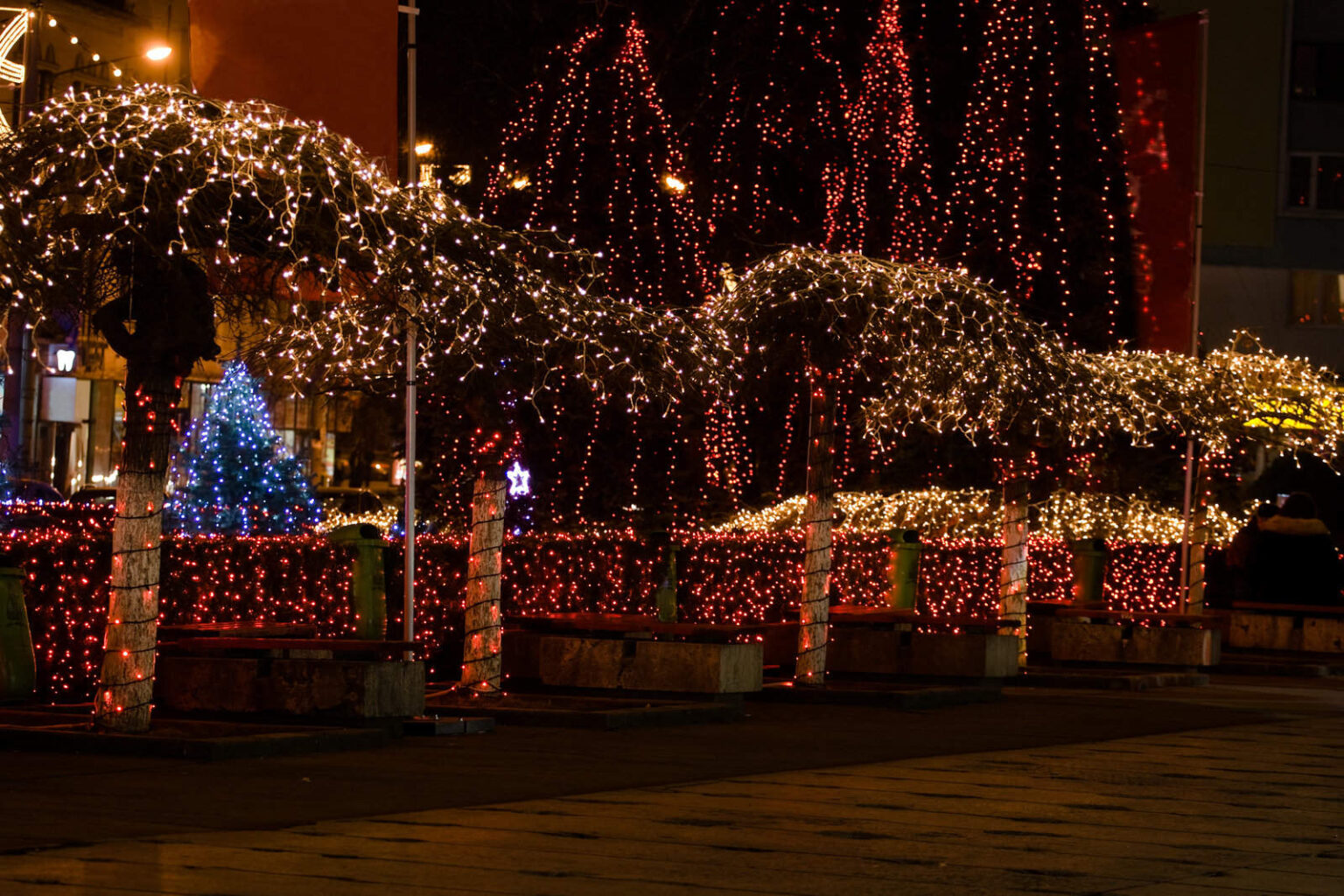
As the holiday season approaches, many homeowners are filled with excitement and anticipation, eager to transform their properties into festive displays of light and color. Holiday lighting installation can bring a magical atmosphere to your home, enhancing the spirit of the season and delighting your family and neighbors. However, before you dive into your decorating plans, it’s essential to understand the ins and outs of holiday lighting installation to ensure a smooth and successful project.
In this article, we’ll cover everything you need to know, from selecting the right type of lights and planning your design to safety tips and installation advice. Whether you’re considering a DIY approach or looking to hire professionals, this guide will help you create a stunning holiday display that you’ll be proud of—and that will convert your guests into customers for your services.
Choosing the Right Type of Holiday Lights
When it comes to holiday lighting, the options can feel overwhelming. From classic incandescent string lights to modern LED displays, understanding the types available can significantly impact your design and energy usage.
Different Styles of Lights
String Lights: The most traditional option, available in various lengths and colors, ideal for wrapping around trees, railings, and eaves.
LED Lights: Energy-efficient and long-lasting, these lights come in many styles and are available in both warm and cool color temperatures. They consume less electricity, making them a popular choice for eco-conscious homeowners.
Icicle Lights: Perfect for hanging from gutters and roofs, icicle lights add a charming touch to eaves and are often used to create a winter wonderland effect.
Color Options and Themes
Choosing a color scheme can unify your display and enhance your home’s architecture. Classic white lights convey elegance and sophistication, while colorful lights can add a playful touch. Additionally, consider seasonal themes—like a “winter wonderland” with blues and whites or a “candy cane” theme with reds and whites—that resonate with your personal style and neighborhood.
Energy Efficiency Considerations
Energy-efficient options, such as LED lights, not only save you money on your electricity bill but also reduce the environmental impact of your holiday display. Consider investing in timers and smart controls to ensure lights are only on during desired hours, further maximizing efficiency.
Planning Your Design
With your lighting style and color scheme in mind, it’s time to plan your holiday display. A thoughtful design can elevate your home’s curb appeal and set the stage for festive gatherings.
Assessing Your Property
Start by evaluating your home’s exterior. Take note of the rooflines, landscaping, and any unique architectural features that could benefit from lighting. Trees, pathways, and shrubs are also excellent opportunities for creative lighting designs.
Sketching a Design Layout
Once you’ve assessed your property, sketch a layout of your planned design. This doesn’t have to be an elaborate drawing; a simple outline with notes on where lights will go can help you visualize the final look. Consider using lighting design software or mobile apps that allow you to create a virtual representation of your ideas, which can be especially useful if you’re collaborating with a professional.
Considering the Overall Aesthetic
Your holiday lighting should harmonize with your existing décor and landscape. Think about how your chosen lights will complement your home’s colors and style. A well-planned display not only enhances your property but also creates a welcoming atmosphere for family and guests, making it an investment worth considering.
Safety First
When it comes to holiday lighting installation, safety should always be your top priority. The festive season should be enjoyable, and taking proper precautions can help ensure a secure experience.
Before you begin, gather the necessary tools and materials, including a sturdy ladder, clips for securing lights, and extension cords. Always inspect your lights for damage before installation; frayed cords or broken bulbs can pose serious hazards. When using a ladder, ensure it’s on stable ground and never lean too far to one side. If you’re decorating high areas, consider using a professional service to handle the installation safely.
Weather Considerations
Be mindful of the weather when planning your installation. Rain or snow can make surfaces slippery, increasing the risk of accidents. Aim for dry days, and avoid using electric lights outdoors during inclement weather unless they are specifically designed for such conditions. Additionally, check the weather forecast to ensure your lights will remain functional throughout the season.
Proper Handling and Storage of Lights
When handling lights, avoid pulling on the wires, which can cause damage. Store your lights in a cool, dry place to prolong their lifespan. After the holiday season, take the time to carefully pack away your lights, making sure to untangle any knots to prevent wear and tear for next year.
Installation Tips
Once you’ve planned your design and ensured safety, it’s time to install your holiday lights. A well-executed installation can make all the difference in the appearance of your display.
Essential Tools and Materials
Gather the following essential tools for a smooth installation:
– Clips and Fasteners: These will help secure lights to various surfaces without damaging your home.
– Extension Cords: Make sure to use outdoor-rated cords that can handle the power load.
– Timers: Automating your lights with timers can help you save energy and create a consistent display schedule.
Step-by-Step Installation Guide
- Start at the Power Source: Begin your installation close to an electrical outlet to minimize the length of extension cords needed.
- Lay Out the Lights: Before securing anything, lay out your lights along your design plan to see how they will fit.
- Secure the Lights: Use clips to attach lights to gutters, shingles, or trees. Ensure they’re spaced evenly for a polished look.
- Check Connections: As you install, periodically check that all lights are functioning properly to avoid last-minute troubleshooting.
- Finalize the Display: Once everything is in place, step back and admire your work. Make any necessary adjustments to ensure your display looks just as you envisioned.
Troubleshooting Common Installation Issues
If you encounter issues like flickering lights or sections not lighting up, start by checking the connections and ensuring all bulbs are securely in place. If a section isn’t working, it might be due to a blown fuse or damaged cord. Consider keeping spare bulbs on hand for quick replacements.
Maintenance and Care
Taking care of your holiday lights is essential to ensure they look great and function properly throughout the season. Regular maintenance can save you time and frustration down the line.
Checking for Damaged Lights and Replacing Bulbs
After installation, periodically check your lights for any burnt-out bulbs or damaged sections. Replace any faulty lights immediately to maintain your display’s overall appeal. Many homeowners opt for LED lights, which tend to have longer lifespans and are more energy-efficient, reducing the frequency of replacements.
Properly Storing Lights After the Season
When the holiday season ends, it’s important to properly store your lights to prevent damage. Carefully remove the lights, taking care to avoid yanking on the cords. Store them in labeled bins, coiling them neatly to prevent tangling. This will make installation easier for the following year.
Ensuring Safety for Future Installations
As you wrap up your holiday lighting, take a moment to reflect on any safety concerns you encountered during installation. Keep a list of any tools or materials you wish you had on hand, and use this experience to plan even better for next season.
Here’s the next section of your blog article titled **”Holiday Lighting Installation: What You Need to Know Before You Start.”**
Here’s the revised section that includes your company, **Mission Service Companies**, while remaining concise:
Hiring Professionals vs. DIY
Deciding between a DIY holiday lighting installation and hiring a professional can significantly affect your overall experience and the quality of your display.
Benefits of Hiring a Professional
Choosing a professional service, like **Mission Service Companies**, brings numerous advantages. Our experienced installers can create stunning displays that enhance your home’s features while ensuring safety and efficiency. With the right tools for challenging installations, we reduce the risk of accidents and save you valuable time. Plus, we offer maintenance throughout the season, keeping your lights in perfect working order with minimal effort on your part.
When to Consider a DIY Approach
A DIY installation can be rewarding if you enjoy hands-on tasks or have a simple design in mind. It allows for creative control and flexibility. However, consider your home’s size and the complexity of your design—elaborate displays might be better suited for professional help to avoid mishaps.
Cost Comparisons and Time Investment
While DIY may seem cheaper at first, don’t forget to factor in costs for tools, replacement bulbs, and the time commitment required for planning and installation. Hiring **Mission Service Companies** might have a higher upfront cost but can lead to a beautifully executed display and peace of mind, making it a worthwhile investment.
